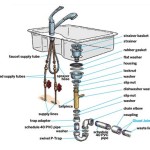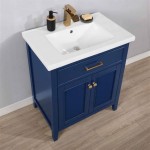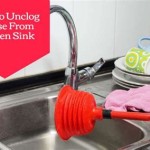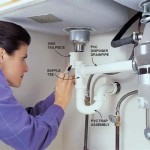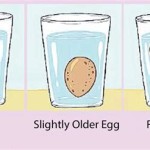Best Ways to Unclog a Sink
A clogged sink is a common household nuisance. It disrupts daily routines, from washing dishes to brushing teeth. Understanding the causes of clogs and knowing effective methods to address them is essential for maintaining a functional plumbing system. This article will provide a comprehensive guide to some of the best ways to unclog a sink, ranging from simple solutions to more advanced techniques.
Before attempting any unclogging method, it's crucial to identify possible causes of the blockage. The most frequent culprits are food particles, grease, hair, soap scum, and mineral buildup. These materials accumulate over time, restricting water flow within the drainpipe. Regular preventative maintenance can significantly reduce the likelihood of clogs, but when a clog does occur, prompt action is necessary to prevent it from worsening.
Boiling Water
The simplest and often most effective first step in unclogging a sink is to pour boiling water down the drain. This method is particularly successful for clogs caused by grease or soap buildup. The high temperature of the water helps to melt these substances, allowing them to flow freely through the drainpipe.
To use boiling water, boil a kettle or pot of water. Carefully pour the boiling water directly into the drain opening. Avoid splashing, as boiling water can cause burns. Allow the water to sit for a few minutes to dissolve the clog. If the water drains slowly or not at all, repeat the process. For stubborn grease clogs, combining boiling water with dish soap can enhance its effectiveness. The soap helps emulsify the grease, making it easier to flush away.
While boiling water is generally safe for most metal and PVC pipes, it's crucial to exercise caution when dealing with older plumbing systems, especially those made of porcelain or certain types of plastic. These materials may be susceptible to cracking or damage from extreme temperature changes. If you are unsure about the type of pipes in your home, consult a plumbing professional before using boiling water.
Additionally, avoid using boiling water after using chemical drain cleaners. The heat can react with the chemicals, producing harmful fumes or causing a potentially dangerous explosion.
Plunger Technique
A plunger is a fundamental plumbing tool and an effective method for dislodging many common sink clogs. The suction created by the plunger forces water back and forth through the drainpipe, breaking up the obstruction and allowing it to flow more easily.
To use a plunger effectively, ensure that there is enough water in the sink to cover the cup of the plunger. For sinks with two basins, seal off the second drain opening using a wet cloth or a stopper to prevent air from escaping. This will maximize the suction power of the plunger.
Place the cup of the plunger over the drain opening, ensuring a tight seal. Push and pull the plunger up and down vigorously, maintaining the seal throughout the process. Continue plunging for several minutes, checking periodically to see if the water begins to drain. If the water drains, flush the drain with hot water to clear any remaining debris.
There are different types of plungers available. A standard cup plunger is suitable for flat surfaces, while a flange plunger, also known as a toilet plunger, has a soft rubber flap that folds out to create a tighter seal, making it more effective for toilets and some sink drains. Choosing the right type of plunger for the specific drain can significantly improve its effectiveness.
If the plunger method fails to clear the clog after several attempts, it may indicate a more severe blockage that requires a different approach.
Baking Soda and Vinegar Solution
A combination of baking soda and vinegar is a natural and effective alternative to chemical drain cleaners. This method generates a chemical reaction that produces carbon dioxide gas, which helps to break up clogs and clear drainpipes. The solution is generally safe for all types of pipes and is an environmentally friendly option.
To use baking soda and vinegar, first, pour one cup of baking soda down the drain. Follow this with one cup of white vinegar. The mixture will fizz and bubble vigorously. Allow the solution to sit for 30 minutes to an hour to allow the reaction to work on the clog. After the waiting period, flush the drain with hot water to clear any remaining debris.
For particularly stubborn clogs, you can increase the amount of baking soda and vinegar or repeat the process multiple times. You can also leave the mixture to sit overnight for a more thorough cleaning. To further enhance the effectiveness of this method, you can use a plunger after the baking soda and vinegar mixture has sat for a sufficient amount of time.
While baking soda and vinegar is a relatively mild solution, it's still important to avoid using it after chemical drain cleaners. The reaction between baking soda and vinegar can potentially release harmful fumes if combined with other chemicals.
Drain Snake or Auger
A drain snake, also known as a plumbing snake or auger, is a flexible tool used to mechanically break up or retrieve clogs that are located deeper within the drainpipe. It consists of a long, flexible metal cable with a corkscrew or auger-shaped tip.
Insert the drain snake into the drain opening, carefully feeding it down the pipe. Rotate the handle of the snake to advance the cable through the drain. When you encounter resistance, it indicates that you have reached the clog. Continue rotating the handle to break up the clog or hook onto it. Once you have broken up or retrieved the clog, slowly pull the drain snake out of the drainpipe, removing any debris that is attached to the end.
After removing the drain snake, flush the drain with hot water to clear any remaining debris. If the water drains slowly, repeat the process until the drain is completely clear.
Drain snakes are available in various lengths and thicknesses. For sink drains, a smaller, more flexible snake is generally recommended. Be careful when using a drain snake to avoid damaging the pipes. Avoid forcing the snake if it encounters significant resistance, as this could potentially damage the pipe walls.
For those not comfortable using a drain snake, a plumber can offer the same service with specialized equipment to ensure the pipe system is not damaged.
Checking the P-Trap
The P-trap is a U-shaped section of pipe located under the sink. Its primary function is to trap debris and prevent sewer gases from entering the home. However, the P-trap can also be a common location for clogs to accumulate.
Before disassembling the P-trap, place a bucket or container underneath to catch any water or debris that may spill out. Carefully loosen the slip nuts that connect the P-trap to the drainpipes. Once the nuts are loose, gently remove the P-trap. Inspect the inside of the P-trap for any accumulated debris, such as hair, food particles, or grease. Remove any debris that you find.
After cleaning the P-trap, reassemble it by connecting it back to the drainpipes and tightening the slip nuts. Ensure that the connections are secure to prevent leaks. Run water down the drain to check for leaks and to ensure that the drain is flowing freely.
If the P-trap is severely clogged or damaged, it may need to be replaced. Replacement P-traps are readily available at most hardware stores.
If the homeowner is not comfortable detaching plumbing fixtures, a licensed plumber may be necessary to complete the work.
Wet/Dry Vacuum
A wet/dry vacuum can sometimes be an effective tool for unclogging a sink, particularly when the clog is located relatively close to the drain opening. The vacuum's suction power can help to pull the clog out of the drainpipe.
To use a wet/dry vacuum, first, remove any standing water from the sink. Attach the vacuum hose to the drain opening, ensuring a tight seal. You may need to use duct tape or a rubber adapter to create a secure connection. Turn on the vacuum and allow it to run for several minutes. Periodically check to see if the vacuum has pulled any debris out of the drainpipe.
After running the vacuum for a sufficient amount of time, turn it off and remove the hose. Flush the drain with hot water to clear any remaining debris. If the water drains slowly, repeat the process until the drain is completely clear.
The effectiveness of this method depends on the type and location of the clog. It is most effective for clogs that are relatively loose and located close to the drain opening. For more stubborn clogs or those located deeper within the drainpipe, other methods may be more suitable.
Preventative Measures
Preventing clogs is always better than having to deal with them. Implementing a few simple preventative measures can significantly reduce the likelihood of sink clogs.
One of the most important preventative measures is to avoid pouring grease, oil, or food scraps down the drain. These materials can solidify within the drainpipe, leading to blockages. Instead, dispose of grease and oil in a separate container and scrape food scraps into the trash or compost bin.
Using a drain strainer or mesh screen can also help to prevent clogs. These devices catch hair, food particles, and other debris before they enter the drainpipe. Regularly clean the strainer or screen to remove any accumulated debris.
Periodic flushing of the drain with hot water can help to prevent the buildup of grease and soap scum. Pouring a kettle of hot water down the drain once a week can help to keep the drainpipe clear.
Consider using enzyme-based drain cleaners as part of a regular maintenance routine. These cleaners use enzymes to break down organic matter, such as hair, food particles, and grease. They are generally safe for all types of pipes and are an environmentally friendly option. However, it's important to follow the manufacturer's instructions carefully.
Regularly cleaning the sink and drain with a mild detergent can also help to prevent the buildup of soap scum and other debris. Wipe down the sink basin and rim with a damp cloth and a mild detergent. Rinse thoroughly with water.
Addressing minor clogs promptly can prevent them from worsening. If you notice that the drain is draining slowly, take action immediately to clear the clog before it becomes a major problem.
When all else fails, or if you are uncomfortable attempting any of these methods, it is best to consult a professional plumber. Plumbers have the expertise and specialized tools to diagnose and resolve complex plumbing problems safely and effectively.

How To Unclog A Sink The Experts Simple Steps Drain

How To Unclog A Sink The Right Way

How To Unclog A Sink

The Best Ways To Unclog A Kitchen Sink According Plumbers Food Network

How To Unclog A Bathroom Sink The Home

How To Unclog A Kitchen Sink Family Handyman

How To Unclog A Kitchen Sink Using Baking Soda And Vinegar

Top Drain Clog Solutions Heb Plumbing Sprinkler

Easy Ways To Unclog Drains Clearing Clogged

How To Plunge A Sink Unclog Drains Quickly Easily
